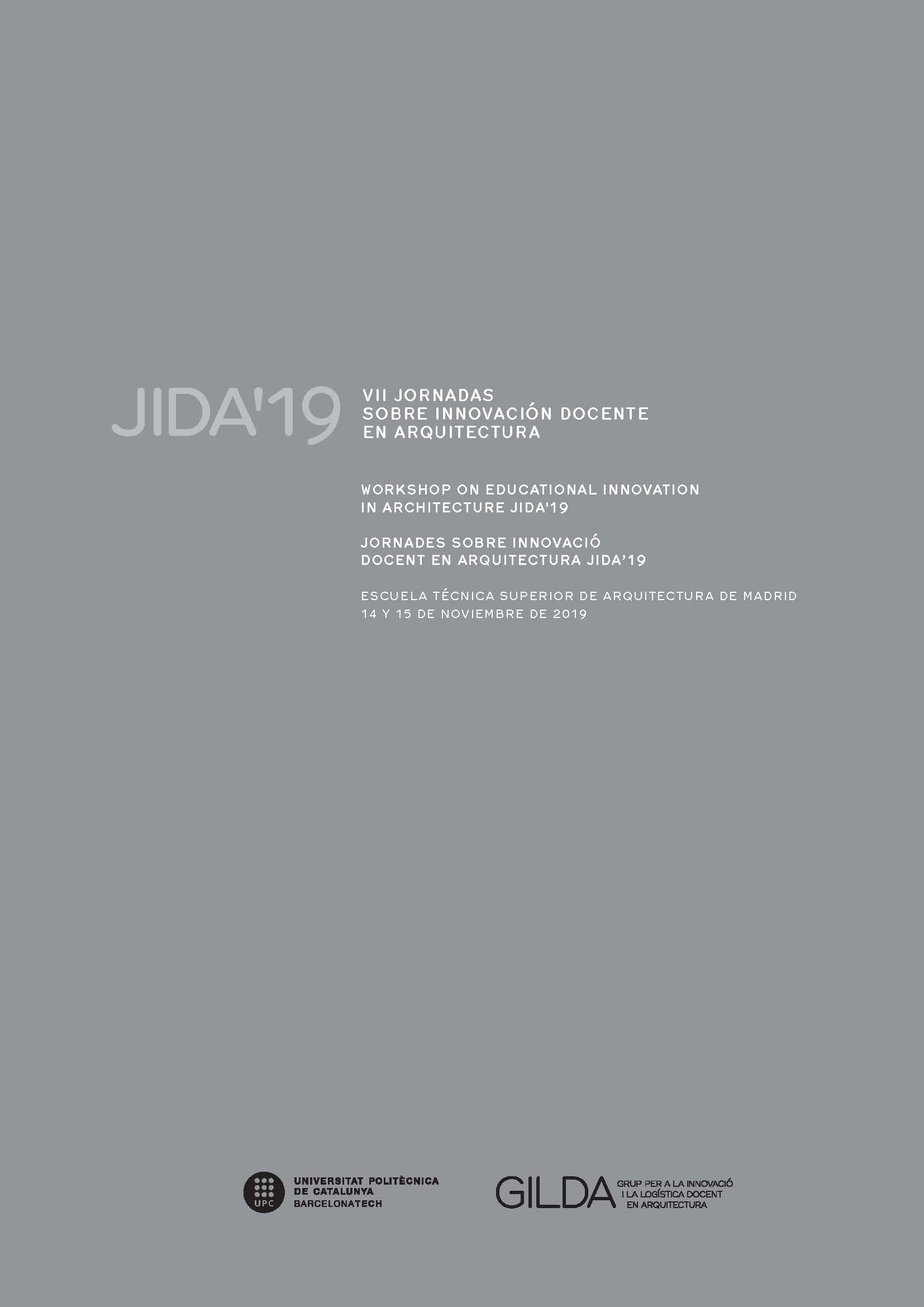Transversality and Common Ground between Architecture, Design Thinking and Teaching Innovation
DOI:
https://doi.org/10.5821/jida.2019.8329Resumen
We are currently facing a new social and technological situation that demands a different and renewed approach to the way we teach architecture and design as a whole. It is not the first time that the economic and social situation triggers a crucial shift in the way we understand this matter. Learning from the Bauhaus (stepping onto industrial design), the school of Ulm (new step onto non-tangible design) and Design Thinking as an outcome and commercial product consequence of the ‘design rationale’ of those years of the twentieth century, we can build over the foundations of the classical architecture design studio practice, a set of exercises, methodologies and a general approach in order to handle the future of architectural teaching. Today, we can merge the experiences of Bauhaus and Ulm, Design Thinking and the classical architectural teaching to frame a coherent and holistic approach to architecture and design.
Citas
BOUCHARENC, C.G. (2006). Int J Technol Des Educ 16: 1. <https://doi.org/10.1007/s10798-005-2110-8>
BROUSSARD, MEREDITH (2109). “Artificial Unintelligenceâ€. MIT press.
CROSS, N. (1982). “Designerly Ways of Knowingâ€, Springer, London, 2006.
DUBBERLY, HUGH and RITH, CHANPORY. (2007). “Why Horst W. J. Rittel Matters†Design Issues: Volume 23, Number 1 72-74. Print.
FINDELI, A. (2001). Rethinking Design Education for the 21st Century: Theoretical, Methodological, and Ethical Discussion.
ITTEN, J. Design and Form: The Basic Course at the Bauhaus and Later. Wiley.
KANDINSKY, W. (1975). Cursos de la Bauhaus. Alianza Forma.
KUNZ, W. and RITTEL, H. (1970). Issues as elements of information systems. Working Paper 131.
LERNER, F. (2005). Foundations for Design Education: Continuing the Bauhaus Vorkurs Vision. Studies in Art Education, 46(3), 211-226. Retrieved from <http://www.jstor.org/stable/3497081>
LIZONDO, L., BOSCH, L., FERRER, C. and ALAPONT, J.L. (2019). Teaching architectural design through creative practices.
MOGGRIDGE, B. (2006). “Designing Interactionsâ€. The MIT Press.
NORMAN, D. (1993). “Things That Makes Us Smart. Defending Human Attributes in the Age of the Machineâ€. Basic Books: New York.
NORMAN, D. (2010). Why design education must change.
NEVES, ISABEL C. and ROCHA, J. (2013). “The contribution of Tomas Maldonado to the scientific approach to design at the beginning of computational era. The case of the HfG of Ulmâ€.
RANJAN, M.P. (2005). Faculty of Design National Institute of Design Paper submitted for the DETM Conference at the National Institute of Design, Ahmedabad.
ROWE, P. (1987). “Design Thinkingâ€. MIT Press.
SOSA, R. et al. (2014 and 2015). “Design Journal†for 3.007 Introduction to Design. SUTD/MIT press.
STAPPERS, P. and GIACCARDI, E. (2017). “Research Through Designâ€. Interaction Design Foundation. TU Delft.
SZCZEPANKSA. (2017). <https://medium.com/@szczpanks/design-thinking-where-it-came-from-and-the-type-of-people-who-made-it-all-happen-dc3a05411e53> [Last accessed 15th May 2019]
SUTD. (2019). <https://asd.sutd.edu.sg/programme/bachelor-of-science-architecture-and-sustainable-design/courses/3007-introduction-to-design> [Last accessed 15th May 2019]
THE DESIGN EXCHANGE. (2019). <https://www.thedesignexchange.org/design_methods> [Last accessed 15th May 2019]






















